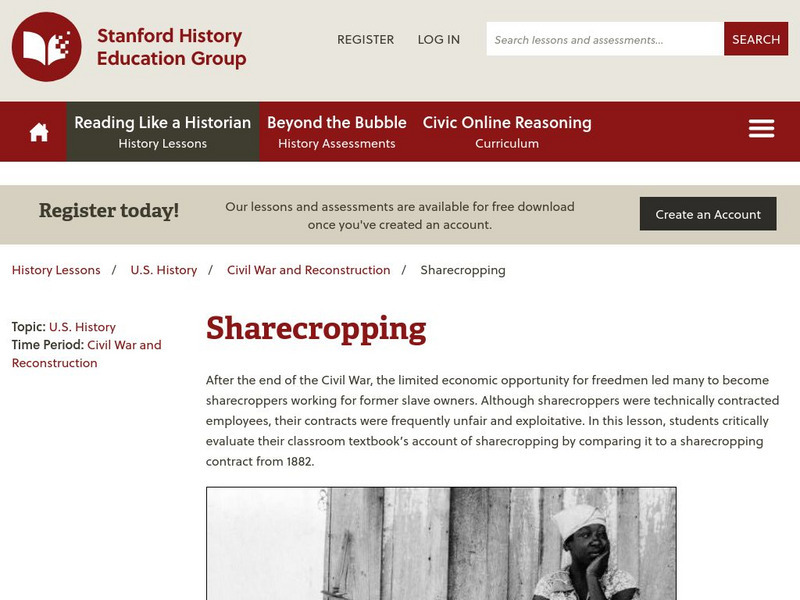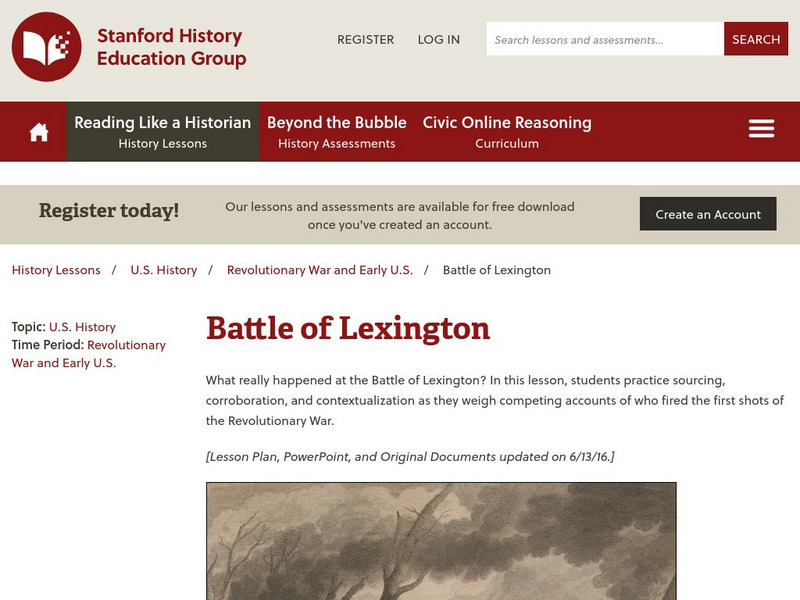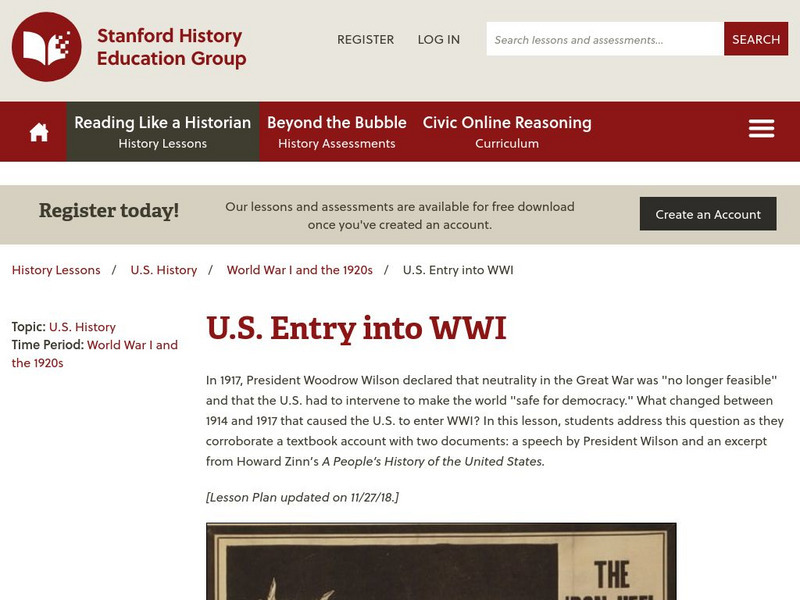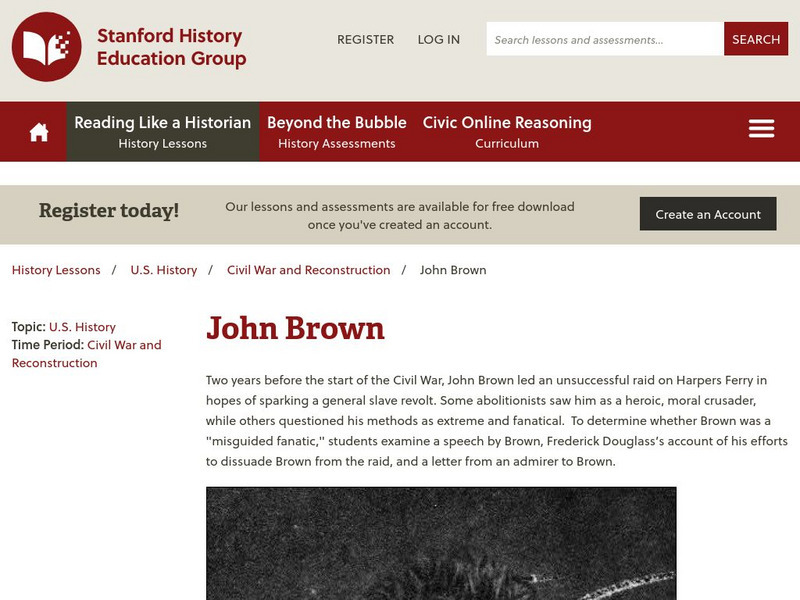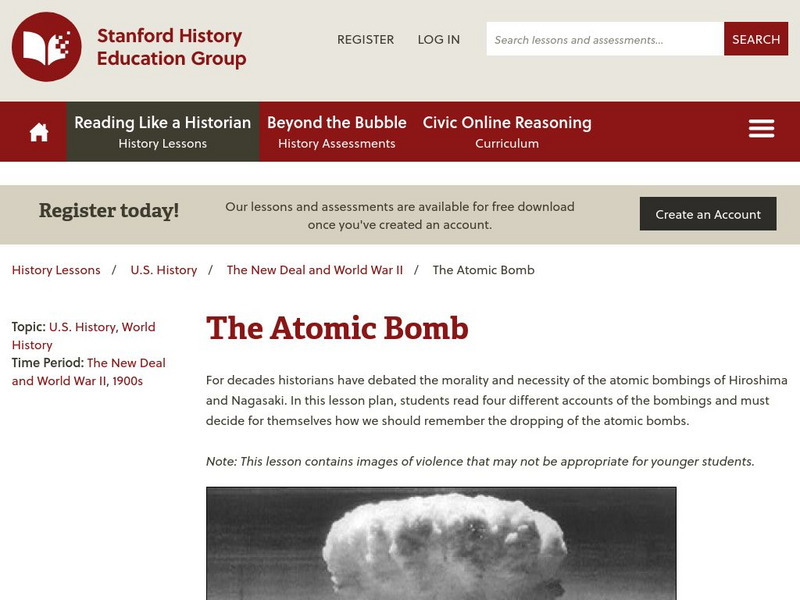Curated OER
People and Places in Indiana's Underground Railroad
Fourth graders use an Indiana map to explain why Indiana's geographic location was important to its role in the UGR. They experience personal stories and feelings of the people involved in UGR through role-play and literature.
Curated OER
Seashore Life
In this seashore life worksheet, students identify the animals that live on the seashore. Students then color the animals that live on the seashore. Students also draw and color any additional animals they would see.
Curated OER
Spirituals
Fourth graders examine the significance in the Negro spirituals concerning the Underground Railroad. They explore the cultural, geographical, historical, physical, and Psychological aspects involved in the Underground Railroad
Read Works
Read Works: Adventure on a Hot Air Balloon
[Free Registration/Login Required] This first person account describes a hot air balloon trip. This passage is a stand-alone curricular piece that reinforces essential reading skills and strategies and establishes scaffolding for...
Read Works
Read Works: A Small Life
[Free Registration/Login Required] This literary text passage shares the story of a hamster and its first person account of what it sees. This passage is to be read aloud and reinforces essential comprehension skills. Opportunities for...
Read Works
Read Works: Portrait of an Artist
[Free Registration/Login Required] This nonfiction passage shares a first person account of an artist's life. This passage is intended for guided practice and is designed to reinforce essential reading comprehension skills.
Stanford University
Sheg: Document Based History: Reading Like a Historian: Maine Explosion
[Free Registration/Login Required] Students solve a problem surrounding a historical question by reading primary source documents. When the USS Maine exploded in Havana Harbor, triggering the Spanish-American War, the New York Times and...
Stanford University
Sheg: Reading Like a Historian: Intro to Historical Thinking: Lunchroom Fight
[Free Registration/Login Required] A fight breaks out in the lunchroom and the principal needs to figure out who started it. But when she asks witnesses what they saw, she hears conflicting accounts. Why might these accounts differ? As...
Stanford University
Sheg: Document Based History: Reading Like a Historian: Snapshot Autobiography
[Free Registration/Login Required] What is history? And why do historical accounts differ? In this lesson, students create brief autobiographies and then reflect on the process to better understand how history is written. Exploring these...
Stanford University
Sheg: Document Based History: Reading Like a Historian: Reconstruction Sac
[Free Registration/Login Required] Young scholars use primary source documents to investigate central historical questions. In this structured academic controversy, students examine constitutional amendments, a Black Code, a personal...
Stanford University
Sheg: Document Based History: Reading Like a Historian: Sharecropping
[Free Registration/Login Required] Young scholars solve a problem surrounding a historical question by reading primary source documents. This historical inquiry lesson plan allows students to critically evaluate their classroom...
Stanford University
Sheg: Document Based History: Reading Like a Historian: Homestead Strike
[Free Registration/Login Required] Students solve a problem surrounding a historical question by reading primary source documents. This historical inquiry lesson allows students to use the historical thinking skills of corroboration,...
Stanford University
Sheg: Document Based History: Reading Like a Historian: Pullman Strike
[Free Registration/Login Required] Students read primary source documents to solve a problem surrounding a historical question. This document-based inquiry lesson allows students read parallel accounts of the Pullman Strike of 1894 from...
Stanford University
Sheg: Document Based History: Reading Like a Historian: Battle of Lexington
[Free Registration/Login Required] Students solve a problem surrounding a historical question by reading primary source documents. This historical inquiry lesson allows students to practice sourcing, corroboration, and contextualization...
Stanford University
Sheg: Document Based History: Reading Like a Historian: Shays' Rebellion
[Free Registration/Login Required] Young scholars read primary source documents to solve a problem surrounding a historical question. This document-based inquiry instructional activity allows students to gain a more nuanced understanding...
Stanford University
Sheg: Document Based History: Reading Like a Historian: Lewis and Clark
[Free Registration/Login Required] In this Structured Academic Controversy (SAC), students read four documents that give different accounts of how Lewis and Clark treated the Native Americans they met on their expedition. Students are...
Stanford University
Sheg: Document Based History: Reading Like a Historian: Battle of Little Bighorn
[Free Registration/Login Required] Students solve a problem surrounding a historical question by reading primary source documents. This historical inquiry lesson allows students to explore causes of the Battle of Little Bighorn by...
Stanford University
Sheg: Document Based History: Reading Like a Historian: American Imperialism
[Free Registration/Login Required] The American Imperialism Unit covers the Spanish-American War and the Philippine-American War. The lessons approach historical inquiry from different angles. One asks students to consider contrasting...
Stanford University
Sheg: Document Based History: Reading Like a Historian: u.s. Entry Into Wwi
[Free Registration/Login Required] For this historical inquiry lesson, students address the question, "What changed between 1914 and 1917 that caused the U.S. to enter WWI?" to corroborate a textbook account with two documents: a speech...
Stanford University
Sheg: Document Based History: Reading Like a Historian: Nat Turner
[Free Registration/Login Required] Nat Turner led the largest slave uprising the South would see until the Civil War. The infamy of the event has led to multiple interpretations of Turner as a historical figure. By sourcing and...
Stanford University
Sheg: Document Based History: Reading Like a Historian: John Brown
[Free Registration/Login Required] Students use primary source documents to investigate central historical questions. In this investigation, students must determine whether John Brown was a "misguided fanatic," by examining a speech by...
Stanford University
Sheg: Document Based History: Reading Like a Historian: The Atomic Bomb
[Free Registration/Login Required] How necessary was it for the United States to drop the atomic bombs on Nagasaki and Hiroshima in World War II? In this instructional activity, students will study varying accounts and develop their own...
CommonLit
Common Lit: A Participant's First Hand Account of the Boston Tea Party
A learning module that begins with "A Participant's First-hand Account of the Boston Tea Party" by George Hewes, accompanied by guided reading questions, assessment questions, and discussion questions. The text can be printed as a PDF or...
Read Works
Read Works: An Account From the Slave Trade: Love Story of Jeffrey and Dorcas
[Free Registration/Login Required] This primary source is an excerpt that was written in 1859. The source contains a story of two slaves who were in love. This passage is a historical account of This passage is a stand-alone curricular...










